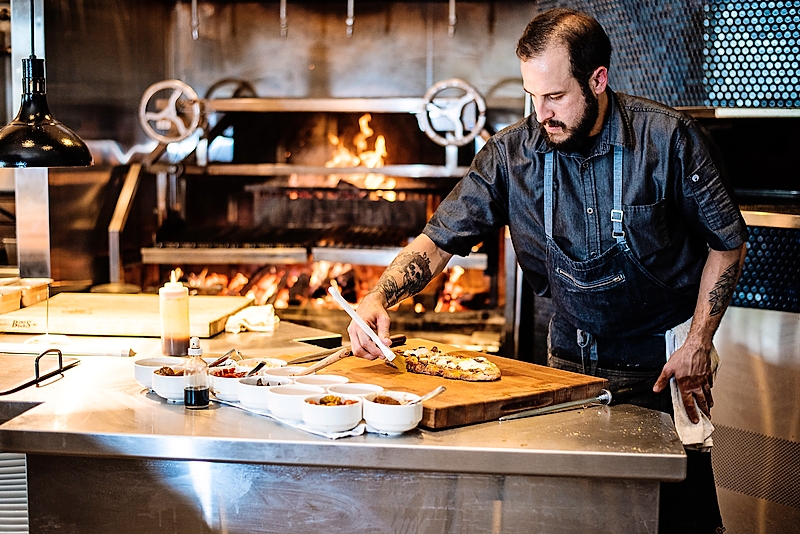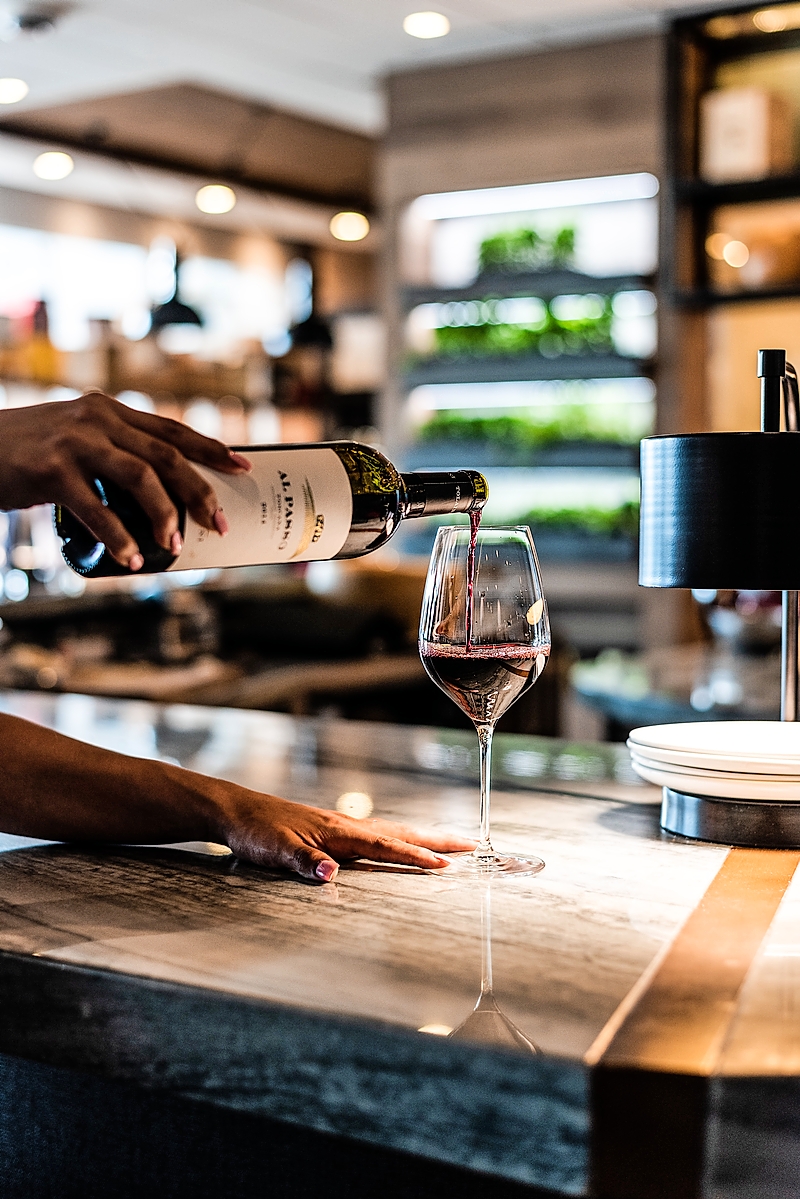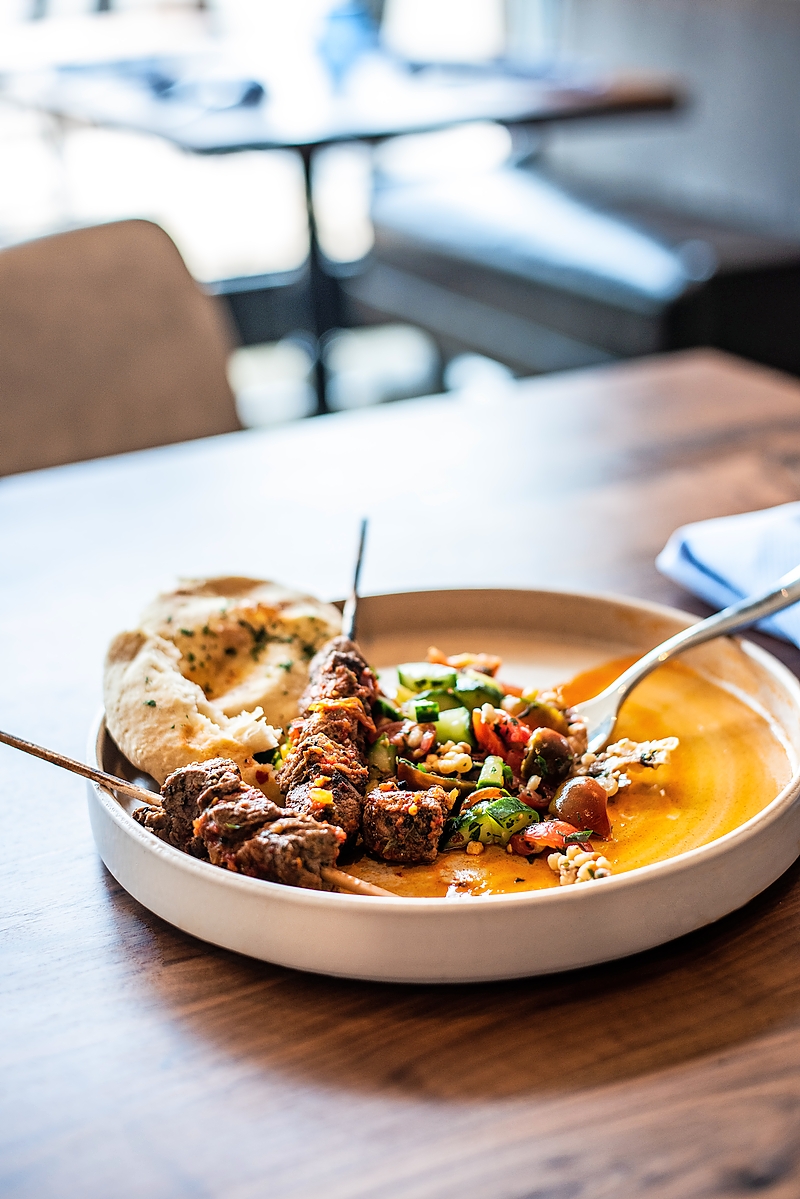Language Lessons
By Mark Loehrke
August 2018 View more Table for Two

For a restaurateur in the traditional red-sauce-and-Sinatra world of Italian dining, it’s not as much a question of the actual English-to-Italian translation of the word itself (“diverso”) as it is about trying to find some measure of distinction in a very crowded and often very been-there-done-that field. But it’s a question that Mark Grimes has set out to answer boldly with Che Figata, a name that may literally translate to “that’s cool,” but which in concept, design and execution, also shouts “we’re different” in almost any language.
“Our modern interpretation of Italian cuisine blends traditional recipes with modern twists,” says Grimes, the executive chef and founder of the newcomer to the CityGate Centre complex on Naperville’s north side. “Naperville is a foodie-driven town, and with our stunning design, sought-after vibe and innovative food and wine program, we believe Che Figata will be a welcome addition to the city’s dining scene as a one-of-a-kind experience for an authentic Italian meal.”
Indeed, from the sleek, modern décor and lively soundtrack, to the adjacent take-home marketplace and signature dining room feature—a half-moon chef’s counter offering unobstructed views into the bustling open kitchen—it’s clear that Che Figata is working in a different dialect than most of its local Italian brethren.

Speaking in Tongues
The dare-to-be-different philosophy extends quite naturally to an extensive menu that owes as much to a dictionary as an encyclopedia when it comes to the depth and breadth of information on offer, thanks largely to the many Italian-to-English sidebars sprinkled throughout the text. More than simply a cute gimmick, the idea behind these extensive notes is not only to educate diners, but to give them a more immersive sense of Italian dining and culture. Guests should therefore plan to spend a fair amount of time contemplating their many options—from hand-crafted pastas to locally sourced cuts of meat—perhaps while enjoying one of the more than 100 wines available by the bottle and 50 by the quartino.
There is also a wide array of small plates with which to tide one over, including skewers of tender Italian herb flank steak and a crab and ricotta cake that practically melts on the tongue. The Roman-style pizzas are a good bet for sharing, with a head-spinning variety of ingredient combinations canoodling atop ovals of thick, chewy and slightly sweet crust (try the namesake Che Figata pie, with a duck egg, pork belly and fig jam).

Hand Signals
One of the draws of the counter seating at Che Figata (and, to a slightly more comfortable though partially obscured effect, the booths just beyond) is the opportunity to watch Grimes’ expert staff bring his inspired concoctions to life with such care and dedication. For while the entrée slate includes plenty of intriguing options, the real magic is in the craft, as meats are cut by hand and cheeses are grated to order and dozens of different pastas and sauces are made from scratch.
It’s this level of commitment to doing things right that elevates dishes like the 16-layer hearth-baked lasagna—a piping-hot crock of those house-made noodles, rich with Parmesan and topped by a healthy dollop of red or white Bolognese. The ragu della domenica stile is likewise a worthy tribute to the pasta-makers, but here the rigatoni shares the plate with more meat (braised short rib, meatball, Italian sausage) than cheese, to satisfying effect.
Nearly a dozen meat and seafood selections get their own creative treatments in Che Figata’s culinary Berlitz course as well, but by the time abbiocco (drowsiness) was setting in and we were wrapping up this journey of a meal with a few scoops of creamy gelato, it was clear that those would have to wait for our next visit—an occasion that couldn’t come soon enough.


